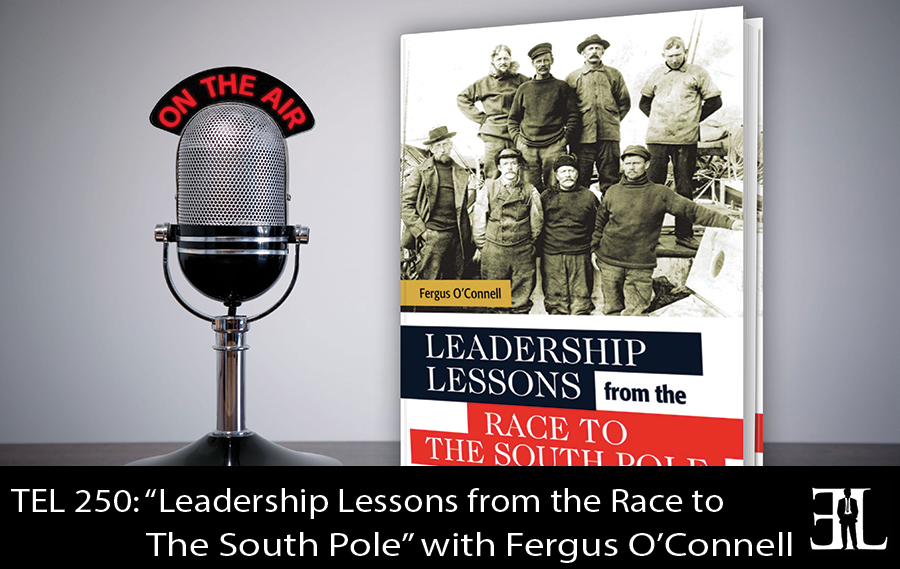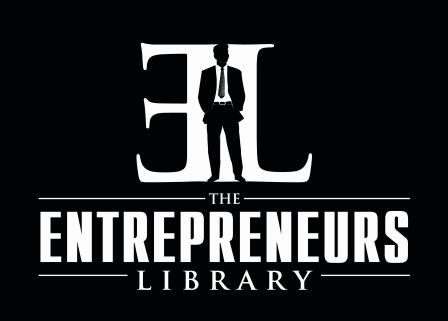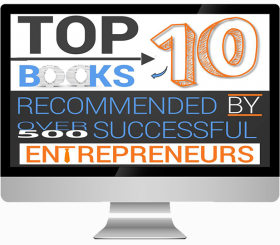TEL 250: Leadership Lessons from the Race to The South Pole with Fergus O’Connell

A summary of things you should know about Leadership Lessons from the Race to The South Pole according to Fergus O’Connell
Introduction (0:42)
In college I studied mathematics and physics and then I became a software person after that and sort of came up through the ranks. In 1992 I started my own company doing project management and consulting. In parallel with that I’ve written many books on project management and related subjects like time management and leadership.
The Book’s Unique Quality (03:19)
If you do a search on Amazon about Amundsen or Scott you will probably get a million hits because there are a lot of books on this subject but no one has looked at it through the lens that I am speaking about of project management.
The Best Way To Engage (04:08)
It can be done either way. What I did was structure the book in ten chapters and each chapter explains the ten elements of running a project smoothly. So it will explain what that element is and then using that as a benchmark it will compare Amundsen’s and Scott’s stories. So they can pick through the chapters to learn or they can read it front to back. There is also a little section at the end of each chapter where I explain how they can take each of those elements and apply it to their life.
The Reader’s Takeaway (14:27)
I think it has to be this business of boxes and clouds, that they goal has to be clear. If the goal isn’t clear everything else kind of falls apart after that. If you don’t know the destination you are heading for then you can’t figure out the journey and you can’t estimate what has to be done. And if you can’t figure out what has to be done then you can have the biggest most skilled team in the world but it’s not going to make a difference if you don’t know precisely what they are meant to be doing.
A Deep Dive Into The Book (05:59)
Basically if anyone buys this book and reads it they will get a very common sense method of running a project successfully. There are lots of other methods out there and a lot of them are very complicated, this is a very common sense sort of method. It has a great track record and the biggest project that was ever applied was in 2003 when the Olympics were held in Ireland. The team of people that ran and executed that project used this method and a lot of them weren’t career project managers and this method very quickly gave them the tools they needed to run the project.
I will go through the tools needed, the essential elements. The very first thing, the goal of the project needs to be clear and bounded. Right from the get go Amundsen and Scott has very different objectives. Amundsen had a very clear goal, he wanted to get to the South Pole first, he wanted to beat Britain (Scott), and then get his people back alive. So it was simple and uncomplicated from the start. Now Scott by comparison wanted to get to the South Pole first but he didn’t think that much about getting his people back alive. His focus was mostly on beating Amundsen and he had some scientific work he wanted to do in Antartica. So you can see that Amundsen had a very clear goal and Scott had a cloudier goal with several elements. You see this when they are on their way back and Scott although running out of food and not getting as far as he needs each day makes stops to complete scientific work. So that was one of the most obvious ways that they were different.
So once you figure out the goal then, and if you think of the goal sort of as the destination of the journey, then what you have to do is estimate the thing properly. Amundsen and Scott were very different with this. Amundsen had a plan that he would cover 15 miles every day in his journey. So you can see that visually that is a very clear plan and what he did was travel these 15 miles and then stop whether it took them 5 hours or 20 hours. Instead of this, Scott’s team would get up in the morning and start pulling and didn’t stop until Scott told them to stop. And apparently Scott was a pretty physically powerful man and they would keep going until Scott was tired. So imagine this happens in the work place. You go into work and you just start working until the boss comes around and tells you to stop, that would be fairly unpleasant.
The next thing that is Scott and Amundsen had very different leadership styles. Scott had been brought up in the British Royal Navy and he had a very old fashioned leadership style and Amundsen had what we would regard as a very modern style. Both of them had styles that worked. Amundsen would really could relate to it more it now but Scott’s people followed him to the death so you can’t really say he’s a bad leader.
Another area was really laking and something you have to do in any project is risk analysis. You need to sort of derail your project. Scott had previous experience in Antartica and three things happened: an outbreak of scurvy, he had a difficult time finding food, and then he didn’t have enough food. So you would have thought that given this experience he would have prepared for them on his journey but all three of them happened again and it ended up killing them.
NOTE: That was just a summary. To get the full deep dive, play the audio clip at 05:59
Notable Quotes From The Book (15:34)
“I thank you from my heart for your work, your commitment, your craft, your comradeship. I have no grand emotions, no profound thoughts to share with you. I have to confess, I experience the excitement of course but above all what I feel is not large or deep at all, it’s just how good it is to be alive.” -Amundsen
The Credibility/Inspiration Of The Author (02:17)
This is an extraordinary story because you rarely come across the same project that is carried out by two teams and one team is spectacularly successful and the other team really screws it up. Each teams effort was documented and the winning team (Amundsen’s team) when he got back he wrote a book about his journey and Scott’s diaries were found after his death. So it’s really the rarest of stories so that was the inspiration behind this.
Other Books Recommended By The Author (17:11)
On Becoming a Novelist by John Gardner
More Information About This Book and The Author (18:26)
Buy on Amazon today
His Website: fergusoconnell.com
Add him to Facebook.
More Information About This Episode
Download the full transcript here
Listen on iTunes, Stitcher , and SoundCloud
Related books:
Relevant advice and tips:
What did you like and not like about this episode? Fill out this one minute survey here.
 The Entrepreneurs Library
The Entrepreneurs Library
















